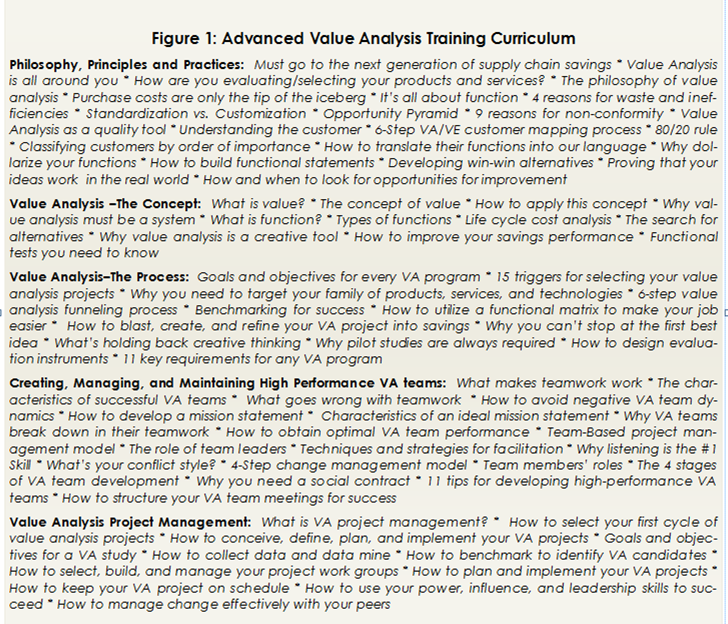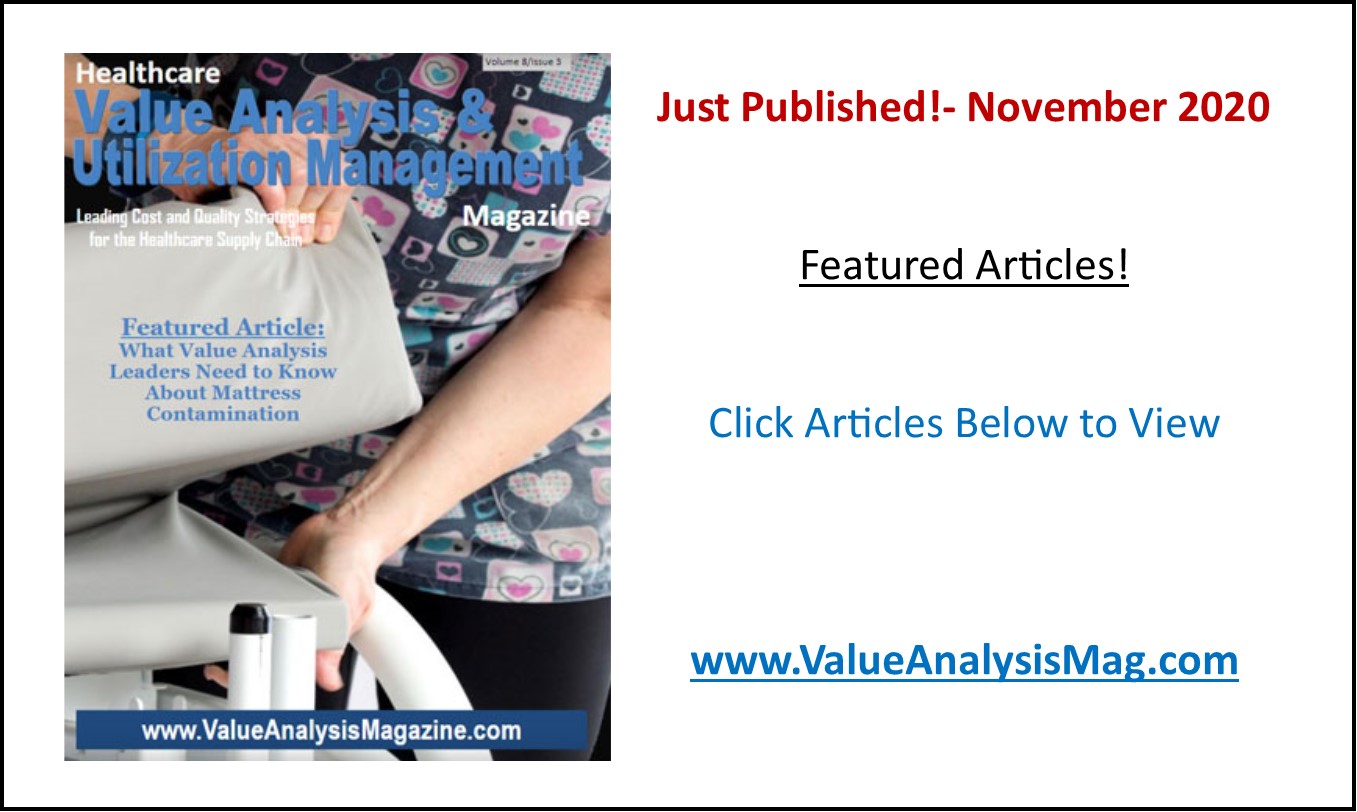VA training is the foundation for reaching even higher levels of savings
There seems to be an aversion by value analysis practitioners to value analysis training in our industry. This is because there is a universal belief in value analysis circles that value analysis can be self-taught and learned by doing. Nothing can be further from the truth!
This misconception has come about because value analysis practitioners have equated value analysis with the product evaluation and selection of their new products, services, and technologies process. This is not value analysis!
Product evaluation and selection is the examination, appraisal, and testing that leads to an informed judgment of the appropriateness of a product, service or technology. Whereas, value analysis is the study of function and the search for lower cost alternatives that provide equivalent performance for the product, service or technology under investigation.
Here’s how these two concepts differ in practice: If a requisitioner or GPO contract offering for new surgical gloves is sent to a value analysis team for evaluation and approval, the gloves’ price will be the number one determining factor after a clinical trial has proven that the new surgical gloves are suitable (e.g., size, strength, tactile sensitivity, etc.) for surgeons’ use. If the same surgical gloves were investigated by employing the classic 6-step value analysis methodology, the functions (primary, secondary, and aesthetic) of the gloves would be identified and measured against predetermined standards to determine the lowest cost alternative that meets the required functions to protect surgeons and patients.
Different Methodologies
Through interviews and observations with customers, stakeholders, and experts, we would clearly understand what functions weren’t being met and then provide those functions at the optimum cost (not price) to meet our customers’ exact requirements. I can guarantee that the outcomes of these two different and distinct methodologies would be quite different — in dollars, satisfaction, and overall acceptability.
That’s why we consider product evaluations to be an inexact science, (i.e., trial and error) whereas, value analysis is an art and science that has a proven, repeatable, and reliable process that provides our customers with their required functions (not more, or less) at the lowest cost.
One big difference is that the value analysis methodology starts with a blank piece of paper! First, we obtain the functional specifications of the product, service or technology under investigation and ignore any customer requisition or GPO offering, until we have fully comprehended the underlying reason or purpose for this commodity. We then search for lower cost alternatives to meet the identified functions exactly. For example, if we received a requisition from the operating room for a new one-time use endomechanical trocar, we would identify its primary function (punch holes), secondary functions (maintain sterility), and aesthetic functions (bladeless). We would then rate (on a scale of 1-10) each function/cost for desirability, reliability, and efficacy. Once we clearly understand what the customer absolutely requires (in most cases eliminating some unnecessary or costly functions along the way), we look for alternatives to meet those functions at a lower cost. As you can see, it’s a whole different “mindset” vs. the product evaluation and selection process most hospitals are employing today to reduce supply chain spend.
Increase Savings with Training
The value analysis process I have outlined requires extensive training to perfect these higher level skills. It’s not a self-taught or learned-on-the-job proposition! Advanced training in the value methodology will enable you and your value analysis team to save even more dollars (26% on average) than you are saving now.
In figure 1, I have outlined what a typical advanced value analysis training program curriculum would look like, which would be given over a one, two or three day session for your value analysis administrative champions, team leaders, and team members.
We recommend that your value analysis steering committee members also attend this same training so they too can understand the value methodology, what their role is in your value analysis process, and start to bond with your team leaders and team members in order to form mutual respectful, professional, and rewarding relationships.
Vital Savings Engine
Value analysis, if practiced correctly, consistently, and scientifically, as I have outlined in this article, is the vital savings engine that all healthcare organizations need to make saving beyond price quickly happen. However, your organization’s success story won’t materialize unless your VA team has the tools, training, and executive management support required to create, manage, and maintain high performance value analysis. If your hospital, system or IDN is serious about value analysis, remember that value analysis isn’t about establishing a value analysis team(s) and then telling the team members to “GO SAVE MONEY!”
It’s about having highly trained, motivated, and incentivized value analysis team leaders and members that understand, internalize, and vigorously apply the six-step value analysis methodology that is taught by experienced professionals who have worked in your shoes. Then, and only then, can you up your value analysis game!





